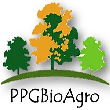Banca de DEFESA: SAMARA SANTOS DE SOUZA
Uma banca de DEFESA de MESTRADO foi cadastrada pelo programa.DISCENTE : SAMARA SANTOS DE SOUZA
DATA : 31/05/2022
HORA: 14:00
LOCAL: Universidade do Estado de Mato, Câmpus de Alta Floresta. Sala de vídeo conferência.
TÍTULO:
INFLUENCE OF SOILS AND SPACE ON THE VARIATION, DISTRIBUTION AND WEALTH OF WOODY SPECIES IN ROCKY OUTLOOK IN THE CERRADO-AMAZON TRANSITIONPALAVRAS-CHAVES:
Floristics, Diversity, Environment.
PÁGINAS: 48
GRANDE ÁREA: Ciências Agrárias
ÁREA: Agronomia
SUBÁREA: Ciência do Solo
ESPECIALIDADE: Química do Solo
RESUMO:
Between the Amazonian DMF and the Cerrado DMF, there is a transition zone, marked by the phytophysiognomic diversity and ecosystem complexity resulting from the floristic interactions of the different Domains. This diversity can, on a broader scale, be explained by climatic factors, such as temperature, precipitation, relief, etc.; however, there is variation in the diversity, composition and structure of vegetation under the same climatic conditions, which can be explained by the interaction of edaphic, hydrological, geomorphological and climatic factors.
Our objective is to investigate the influence of soil attributes on the distribution and species richness in a rocky outcrop area; for this, we collected soil samples from 25 subplots installed in RPPN Cristalino and performed analyzes of 23 physical-chemical soil attributes. For the statistical analysis we used a matrix of soil, richness, distribution and a spatial matrix. To verify the variation of soil attributes, we performed a PCA; to verify the affinity between these attributes, we performed a “Hierarchical Grouping of Variables” and a correlation matrix; to verify the influence of soil on distribution and richness, we performed correlation analysis, and used Generalized Linear Models (GLM); in addition, we performed a partitioning analysis of the variation and response curve for the variables selected by the model. Results: the variation of soil attributes was greater than expected by chance; the first axis of explained 30.7% of the variation, with N, Ct, Mn, Ca, C.ORG., M.O., Mg, Silt, pH H2O being the most important variables. The second axis explained 20.57% of the variation, with Zn, Cu, P. res, the most important variables. The variables were grouped as expected, elements related to organic matter, texture and acidity, with some exceptions such as Mn, which was grouped with Ca and Mg, probably because it is an element of the source rock. The elements Fe and Mn were significant to explain species distribution, and P. res influenced species richness more than expected by chance. In the variation partitioning, the environment and the environment + space were the ones that contributed the most to the model, the space was just not important to explain the variation. From the selected variables, we performed the response curves to verify the affinity of the species to the attributes, the results are very variable between the species. Even in a small area, there was variation in soil attributes, the species that present a greater range of tolerance may be benefiting; source rock elements such as Mn may be filtering the occurrence or abundance of species.
MEMBROS DA BANCA:
Presidente - 210865003 - GUSTAVO CAIONE
Interno - 253812001 - PEDRO VASCONCELLOS EISENLOHR
Externo ao Programa - 132029001 - EDDIE LENZA DE OLIVEIRA
Externo à Instituição - ALINE FRANCIEL DE ANDRADE - UFG



